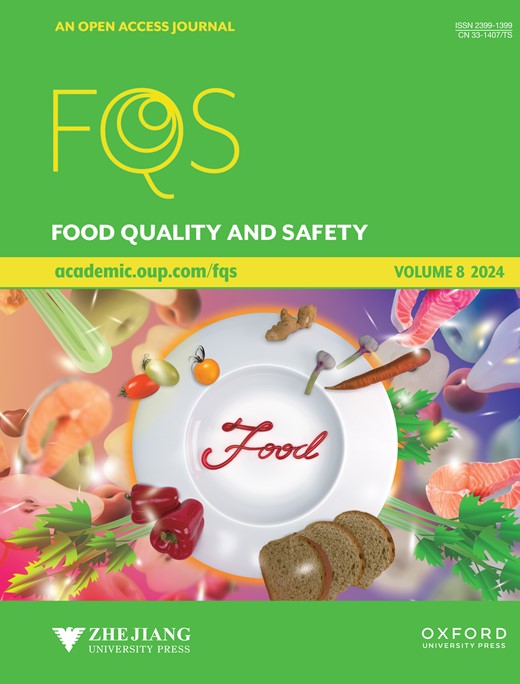柑橘组蛋白乙酰转移酶基因家族的全基因组鉴定及其在柠檬酸盐代谢中的潜在作用
IF 4.4
3区 农林科学
Q2 FOOD SCIENCE & TECHNOLOGY
引用次数: 0
摘要
组蛋白乙酰转移酶(Histone acetyltransferase, HAT)是一种催化组蛋白乙酰化的酶,参与植物的生长发育和逆境反应。本研究共鉴定了柑橘中37个CitHAT基因。鉴定了它们的理化性质、染色体定位、基因结构、保守结构域和基序以及顺式作用元件。基于基因结构、保守结构域和基序分析,将其划分为4个亚家族。基因启动子区域的顺式作用元件被认为与植物生长、抗逆性和激素应答的调控有关。模拟处理和HAT抑制剂处理的柑橘愈伤组织表型和转录组学分析表明,抑制剂处理的柑橘愈伤组织中柠檬酸含量的增加可能是由于组蛋白H3的低乙酰化导致的CitPEPCK2和CitGS2的表达差异。柑橘果实发育阶段CitHAG11和CitHAG28的表达与柠檬酸含量呈负相关。本研究揭示了组蛋白乙酰转移酶在枸橼酸代谢中的潜在功能,并拓展了果实中枸橼酸代谢的分子机制。本文章由计算机程序翻译,如有差异,请以英文原文为准。
Genome-wide identification of the histone acetyltransferase gene family in Citrus clementina and its potential roles in citrate metabolism
Abstract Histone acetyltransferase (HAT) catalyzes histone acetylation and is involved in plant growth and development and stress responses. Here, 37 CitHAT genes were identified in Citrus clementina. Their physicochemical properties, chromosomal location, gene structure, conserved domain and motif, and cis-acting elements were characterized. CitHATs were classified into four subfamilies based on protein sequence homology, which was strongly supported by gene structure, conserved domain, and motif analysis. The cis-acting elements in gene promoter regions were predicted to be associated with the regulation of plant growth, stress resistance, and response to hormones. Phenotypic and transcriptomic analyses of citrus callus with the mock treatment and HAT inhibitor treatment revealed that increased citric acid content in inhibitor treatment may be attributed to differential expression of CitPEPCK2 and CitGS2, which may be due to the hypo-acetylation of histone H3. The expression patterns of CitHATs in citrus fruit development stages showed that CitHAG11 and CitHAG28 exhibited a negative correlation with citric acid content. Our study associates the potential function of histone acetyltransferases in citrate metabolism and extends the molecular mechanism of citrate metabolism in fruits.
求助全文
通过发布文献求助,成功后即可免费获取论文全文。
去求助
来源期刊

Food Quality and Safety
FOOD SCIENCE & TECHNOLOGY-
CiteScore
7.20
自引率
1.80%
发文量
31
审稿时长
5 weeks
期刊介绍:
Food quality and safety are the main targets of investigation in food production. Therefore, reliable paths to detect, identify, quantify, characterize and monitor quality and safety issues occurring in food are of great interest.
Food Quality and Safety is an open access, international, peer-reviewed journal providing a platform to highlight emerging and innovative science and technology in the agro-food field, publishing up-to-date research in the areas of food quality and safety, food nutrition and human health. It promotes food and health equity which will consequently promote public health and combat diseases.
The journal is an effective channel of communication between food scientists, nutritionists, public health professionals, food producers, food marketers, policy makers, governmental and non-governmental agencies, and others concerned with the food safety, nutrition and public health dimensions.
The journal accepts original research articles, review papers, technical reports, case studies, conference reports, and book reviews articles.
 求助内容:
求助内容: 应助结果提醒方式:
应助结果提醒方式:


